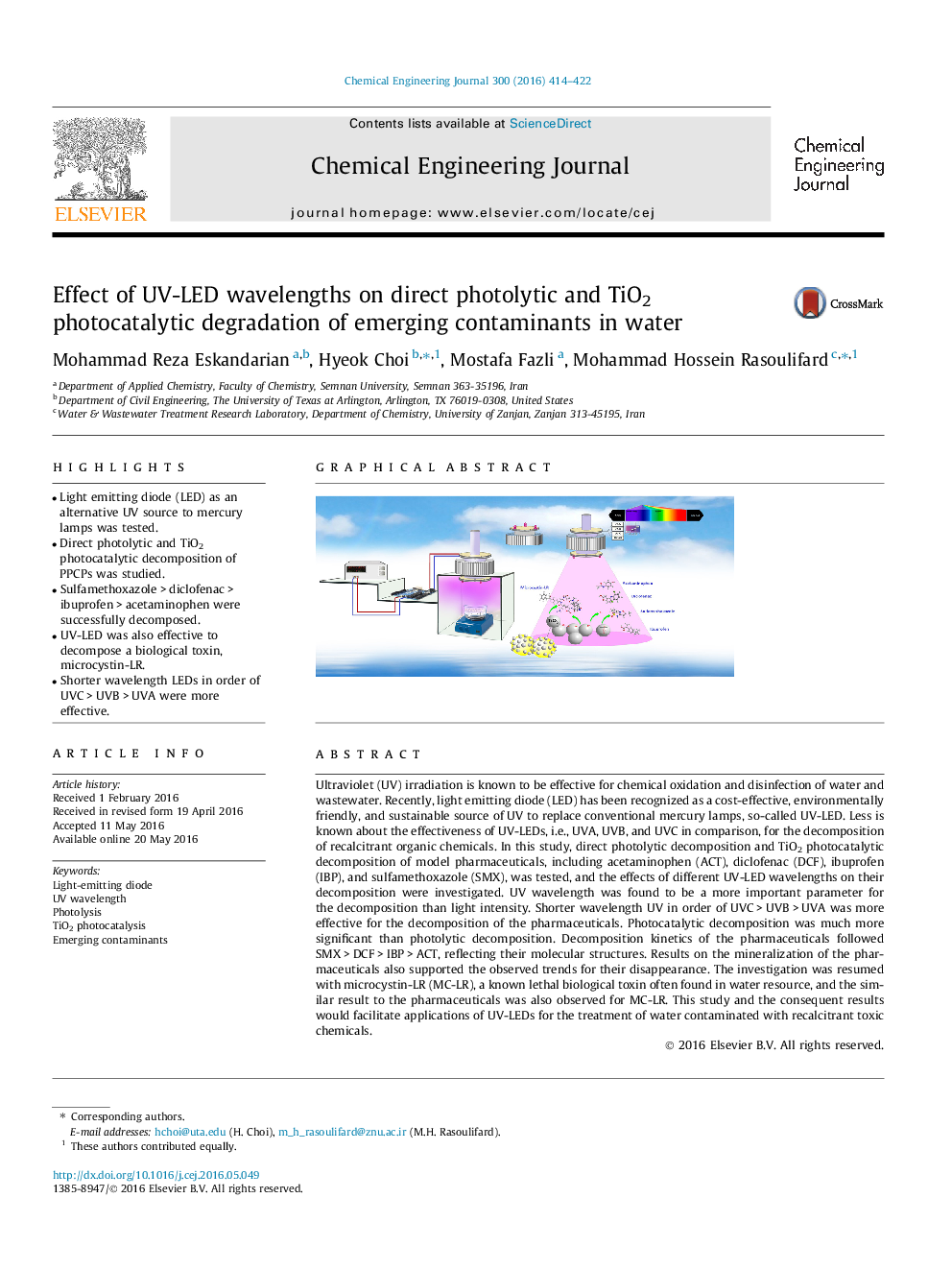| Article ID | Journal | Published Year | Pages | File Type |
|---|---|---|---|---|
| 145443 | Chemical Engineering Journal | 2016 | 9 Pages |
•Light emitting diode (LED) as an alternative UV source to mercury lamps was tested.•Direct photolytic and TiO2 photocatalytic decomposition of PPCPs was studied.•Sulfamethoxazole > diclofenac > ibuprofen > acetaminophen were successfully decomposed.•UV-LED was also effective to decompose a biological toxin, microcystin-LR.•Shorter wavelength LEDs in order of UVC > UVB > UVA were more effective.
Ultraviolet (UV) irradiation is known to be effective for chemical oxidation and disinfection of water and wastewater. Recently, light emitting diode (LED) has been recognized as a cost-effective, environmentally friendly, and sustainable source of UV to replace conventional mercury lamps, so-called UV-LED. Less is known about the effectiveness of UV-LEDs, i.e., UVA, UVB, and UVC in comparison, for the decomposition of recalcitrant organic chemicals. In this study, direct photolytic decomposition and TiO2 photocatalytic decomposition of model pharmaceuticals, including acetaminophen (ACT), diclofenac (DCF), ibuprofen (IBP), and sulfamethoxazole (SMX), was tested, and the effects of different UV-LED wavelengths on their decomposition were investigated. UV wavelength was found to be a more important parameter for the decomposition than light intensity. Shorter wavelength UV in order of UVC > UVB > UVA was more effective for the decomposition of the pharmaceuticals. Photocatalytic decomposition was much more significant than photolytic decomposition. Decomposition kinetics of the pharmaceuticals followed SMX > DCF > IBP > ACT, reflecting their molecular structures. Results on the mineralization of the pharmaceuticals also supported the observed trends for their disappearance. The investigation was resumed with microcystin-LR (MC-LR), a known lethal biological toxin often found in water resource, and the similar result to the pharmaceuticals was also observed for MC-LR. This study and the consequent results would facilitate applications of UV-LEDs for the treatment of water contaminated with recalcitrant toxic chemicals.
Graphical abstractFigure optionsDownload full-size imageDownload as PowerPoint slide
